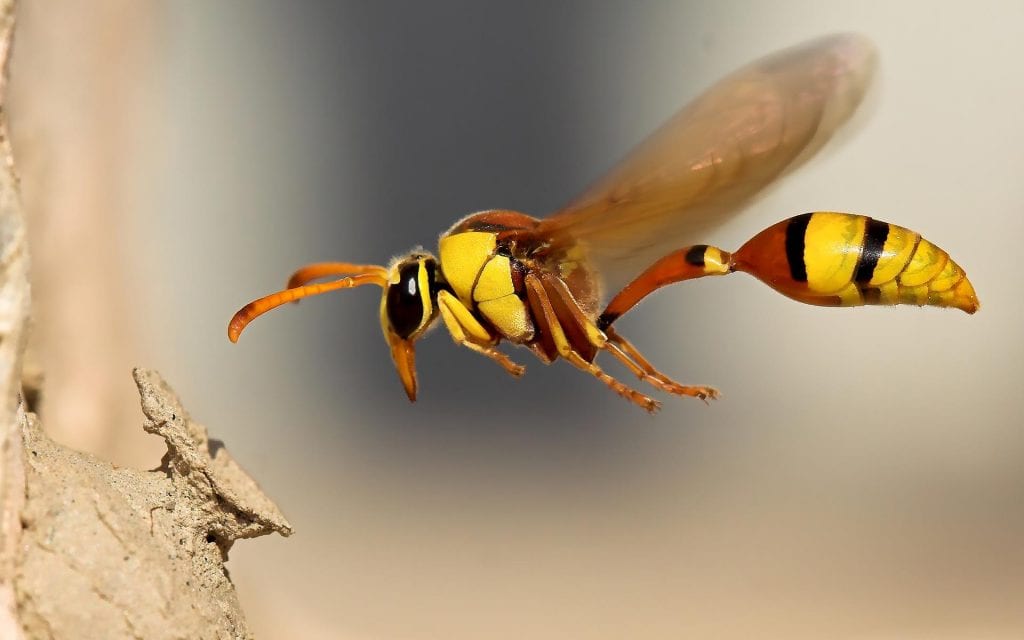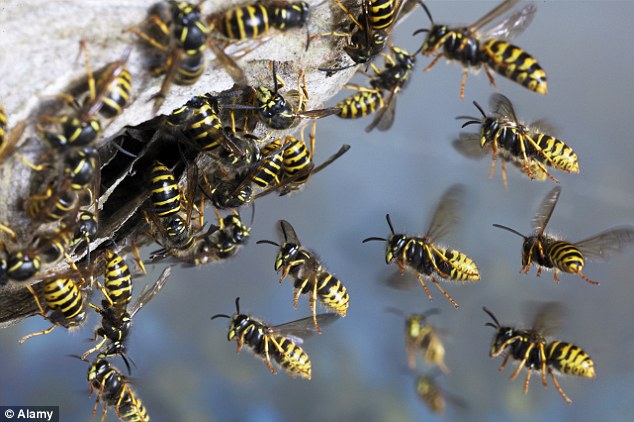Wasp Pest Control in Sydney
Wasps are generally considered pests because they sting and can cause an allergic reaction for some. Continue reading this guide to determine why wasps can be considered pests and need to be removed by pest exterminators.
Did you find wasps on your property? It's best to remove a wasp infestation with the help of our pest control professionals. We provide the best pest control price in Sydney. We can beat any comparable quote!
General Information about Wasps
Wasp (Latin Vespidae) is an insect from the order of Hymenoptera. The female wasps raise their young by laying eggs on or in the larvae of other insects. The wasp larvae kill the host larvae and eat them.
There are tens of thousands of species, and they have spread to all parts of the world. They are usually around 10 to 15 mm in length. However, some species can grow much more, like the Asian giant hornet, which can grow up to 5 centimetres in length. The smallest species of wasps are Trichogrammatidae which are just 0.2 mm in length.
If you have any questions, you may send us a message, chat or call (02) 8007 4666!
Tell us your problem
FREE QUOTE
Wasp Residential Pest Controller
Wasps and bees are quite similar. However, pest control for wasps and bees are quite different. Bees are an endangered species, and their nests should not be removed immediately unless they pose a valid threat. Wasp pest control, on the other hand, is more straightforward and common. As a result, wasp pest control can be done by pest control professionals quickly and safely.
Wasp Pest Treatment
Wasp stings are painful.
A wasp sting can cause burning pain, redness, and inflammation. Bees can sting only once because they leave their stinger behind in the skin of the victim. On the other hand, Wasps can sting repeatedly and then emit a chemical called pheromone that alerts other wasps to attack those nearby.
A wasp sting can cause an allergic reaction.
When a wasp stings you, they inject venom, which contains toxins that might create allergic reactions for some people. One in ten people who are stung two or more times eventually become allergic to wasp stings. Anaphylaxis, a life-threatening allergic reaction to a wasp sting, can be deadly.
Wasp Pest Removal
Professional pest control services use integrated pest management (IPM) approach that involves:
- Examination - This involves thoroughly inspecting the property.
- Documentation - For full compliance and documentation, especially in commercial establishments.
- Education - Getting the support of the property owner is crucial when it comes to removing pests. We'll sit down with you to discuss how we can help each other remove pests on your property.
- Finding the best control method - This involves determining the right pest control solution.
- Area control - This involves removing areas where wasps may make their nests and sealing any entry points to your home.
- Sanitation - This involves removing sources of food and water for wasps.
Common Wasp Species
While hundreds of species of wasps bees worldwide, only a small number of them can be found in Australia.
By understanding their habits and lifecycle, you can better identify the wasp species on your property. The most common wasp species in Australia are specified here:
- European and English Wasp — Known for causing painful stings, these two wasp species are commonly found in New South Wales, Victoria, and Tasmania. They build nests in sheltered locations. Their body is yellow and black, but their markings can vary depending on the species. They can grow from 12 to 17 mm. They feed on insects and sweets. Their colony can grow up to 25 000 individual wasps. The wasp queen only survives over winter. The entire nest dies during winter, and that includes all the males and females.
- Yellowjackets (social wasp) — The worker wasp is around 15 mm in length, while the queen wasp is a little bigger. They have alternating black and yellow bands on their body and two pairs of wings. They feed on insects, but they can also eat food that humans consume. Yellowjackets can repeatedly sting if they are provoked. Their nests are found in trees, bushes, attics, wall cavities, floors, sheds and similar buildings.
Wasp Pest Management
Place bait in a visible location somewhere on your property. Once they locate the food, they will fly directly back to their nest.
However, take note that wasps like searching for food can do it within half a kilometre away from their nest. Therefore, it is recommended to hire professional pest controllers to destroy wasp nests around your home and courtyard, especially if you have experienced an allergic reaction to a wasp sting.
Book Sydney's #1 pest controller
At Masters Pest Control Sydney, we have a team of experts that will help you with all your pest problems. We can quickly resolve any wasp problem using pesticide-free heat treatments and tailored pest management solutions.
Pest control is what we do best. We are professionally trained, insured and licensed in all areas of residential and commercial pest control. With over 40 years of experience, we can provide eco-friendly pest control services for common pests such as termites, rodents, silverfish, paralysis tick, snakes, spiders, cockroaches, bed bugs and much more.
Check out our other services below:



